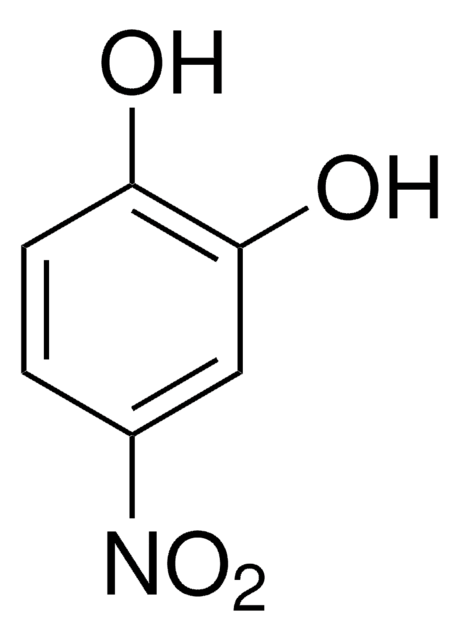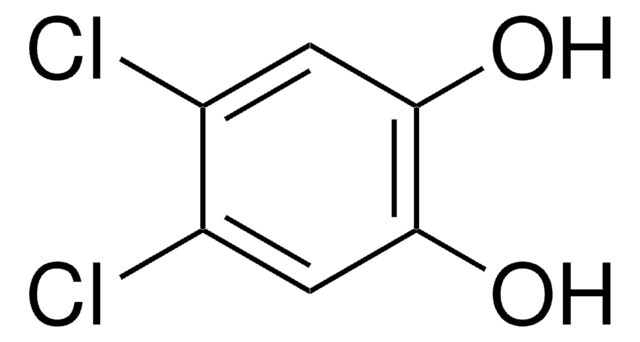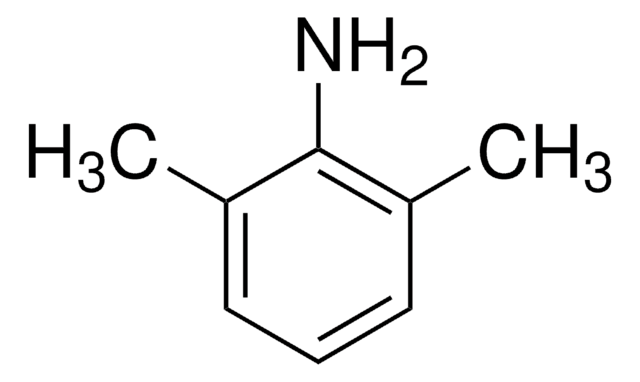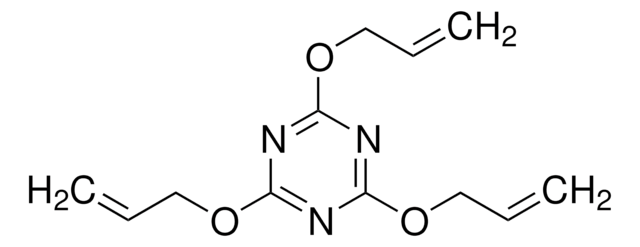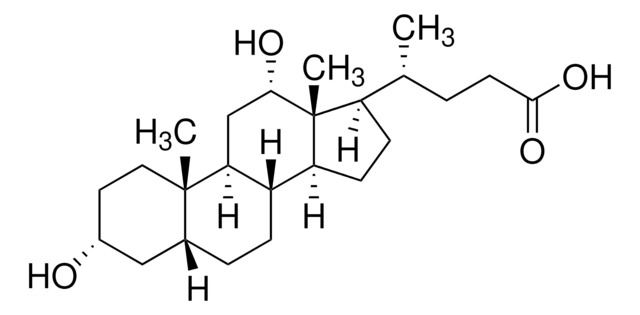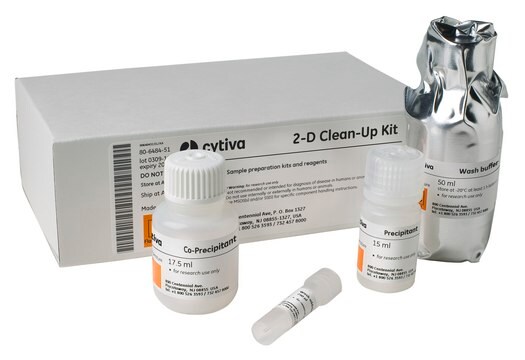D131
3,5-Dinitrocatechol
solid
Sinonimo/i:
3,5-Dinitro-1,2-benzenediol, OR-486
About This Item
Prodotti consigliati
Origine biologica
synthetic (organic)
Saggio
≥98% (HPLC)
Stato
solid
Colore
yellow
Punto di fusione
168-170 °C
Solubilità
H2O: slightly soluble 0.17 mg/mL
45% (w/v) aq 2-hydroxypropyl-β-cyclodextrin: 2.8 mg/mL
0.1 M HCl: slightly soluble
DMSO: soluble
aqueous buffer pH > 5: soluble
ethanol: soluble
Temperatura di conservazione
2-8°C
Stringa SMILE
Oc1cc(cc(c1O)[N+]([O-])=O)[N+]([O-])=O
InChI
1S/C6H4N2O6/c9-5-2-3(7(11)12)1-4(6(5)10)8(13)14/h1-2,9-10H
VDCDWNDTNSWDFJ-UHFFFAOYSA-N
Informazioni sul gene
human ... COMT(1312)
Categorie correlate
Applicazioni
Azioni biochim/fisiol
Qualità
Avvertenza
Codice della classe di stoccaggio
11 - Combustible Solids
Classe di pericolosità dell'acqua (WGK)
WGK 3
Punto d’infiammabilità (°F)
Not applicable
Punto d’infiammabilità (°C)
Not applicable
Dispositivi di protezione individuale
Eyeshields, Gloves, type N95 (US)
Scegli una delle versioni più recenti:
Possiedi già questo prodotto?
I documenti relativi ai prodotti acquistati recentemente sono disponibili nell’Archivio dei documenti.
Il team dei nostri ricercatori vanta grande esperienza in tutte le aree della ricerca quali Life Science, scienza dei materiali, sintesi chimica, cromatografia, discipline analitiche, ecc..
Contatta l'Assistenza Tecnica.